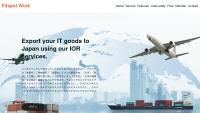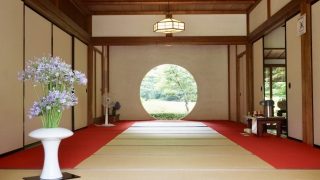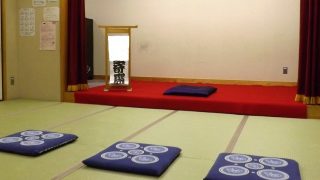About Ukiyoe, Japanese woodblock prints (浮世絵)
Ukiyoe is a Japanese painting genre born in the Edo period that depicts the lives of ordinary people. The word “Ukiyo” in Ukiyoe means “present world” in the Edo period, and there is a wide range of genres such as beauty paintings, Bijin-ga, of women, actor paintings, Yakusha-e, of kabuki actors, and landscape paintings, Meisho-e, of famous places in Japan.
Ukiyoe was an indispensable pastime for the ordinary people of Edo. Whereas paintings were painted for the aristocracy and samurai families in the past, Ukiyoe was cheap, readily available to ordinary people, and a global breakthrough.
Ukiyoe began to be mass-produced by hand-printing as a single picture, taking out only the illustrations, Sashie, from the woodblock picture books. Once multicolored printing became famous in 1765, Ukiyoe became very popular.
Naturally, the theme of Ukiyoe is tailored to the needs of ordinary people. The famous paintings of actors and beauties were replaced by promaids, and the landscape paintings, which became popular in the later period, served as tourist guides.
It is a famous story that the Japanese taste for Japonism became popular in the late 19th century when it spread to Europe.
History of Ukiyoe
Early period
It was around 1670 when Moronobu Hishikawa separated the illustrations, Sashie, from the picture book and made them into a single ornamental picture. It could be printed in large quantities in one color of charcoal, so it became available to ordinary people.
Moronobu Hishikawa also excelled in Ukiyoe prints by hand, and his representative work is “The Beautiful Woman Looking over Her Shoulder” by Mikaeri Bijinzu.

Reference: https://ja.wikipedia.org/wiki/菱川師宣
Middle period
In 1765, Harunobu Suzuki, in cooperation with Surishi(#) and engravers Horishi, completed the multi-colored Ukiyoe “Nishiki-e.” Harunobu Suzuki became famous for writing slender, medieval, and graceful beauty paintings. He also used themes such as the town’s reputed daughter.
(#)Surishi is a craftsman who prints one color at a time on paper using a plate in Ukiyoe prints.
Utamaro Kitagawa achieved great success with the support of Juzaburo Tsutaya, the publisher of Ukiyoe. He incorporated the technique of actor painting into the beauty painting at that time and became very popular. He also noted the subtle personality differences, significantly impacting later generations.
Tōshūsai Sharaku, a mysterious painter, left about 140 paintings of actors and a small number of sumo wrestlers paintings under Juzaburo Tsutaya. He is world-renowned for his powerful and realistic expression. However, it is said that it was unpopular with the people of the time because it was so realistic. He was active for a very short period, about one year in 1794.

Reference: https://ja.wikipedia.org/wiki/東洲斎写楽
Later period
Hokusai Katsushika had a significant influence on Van Gogh and the French Impressionists with his boldly composed landscapes and outstanding sketching skills. Before his death at the age of 90, he created a vast number of works, including “Fugaku Sanjurokkei (36 Views of Mt. Fuji)” and “Hokusai Manga”.
・Fugaku Sanjurokkei

Hiroshige Utagawa became very popular for his innovative landscape paintings incorporating Western techniques.
His representative works include “Tōkaidō-gojūsantsugi (Fifty-three Stations of the Tokaido)” and “Meisho-Edo Hyakkei (One Hundred Famous Views of Edo).”
Ukiyoe was also very popular at the end of the Edo period, including Kuniyoshi Utagawa, whose samurai paintings and caricatures have been reviewed in recent years. In the Meiji period, it made inroads into the world of newspapers but faded away.
How Ukiyoe was made
Ukiyoe is made by the division of labor between three people: a painter, Eshi, who draws the original picture; an engraver, Horishi, who carves it into woodblocks; and a printer, Surishi, who prints the engraving.
And the wholesalers called “publishers, Hanmoto,” took on the role of producers and put them together.
The publisher serves as the producer, instructing the craftsmen as they finish the work.
Painter: drawing an original picture
The painter drew the original picture at the publisher’s request. At this stage, it is still one color of ink. Drawing freely is not always possible, as the publisher decides what to draw according to trends and rules.
↓
Publisher: Censorship
It was not possible to publish a picture unless it passed the criteria such as not offending public order and morals and not being a criticism of the regime. Once permission was granted, the picture was stamped with a “Kiwame-in” to indicate it had passed censorship.
↓
Engraver: engrave the main plate
After receiving the final draft, the engraver turns it over and attaches it to the woodblock. The paper is carved, leaving only the picture lines to make an ink plate. (Main plate)
↓
Painter: assign a color
It will print some black and white pictures. The painter assigns the colors (Irosashi).
↓
Engraver: engrave color plates
Each color plate is engraved according to the “Irosashi” of the painter. It required great skill and was a show of the engraver’s skill.
↓
Printer: Paint one color at a time.
Use multiple woodblocks to complete a Ukiyoe print. The color plates are finely adjusted so that they are not misaligned. It is a complicated technique to ensure the color does not appear unevenly.
Classification of Ukiyoe
Ukiyoe can be classified as beauty paintings, actor paintings, landscape paintings, samurai paintings, etc.
Beauty painting is the most crucial theme of the early Ukiyoe period. Actor paintings of Kabuki actors are also a theme that ranks with beauty paintings.
The famous landscape painting became popular in the latter part of the period. Other pictures, such as samurai paintings, were drawn to suit the tastes of the ordinary people of Edo.













